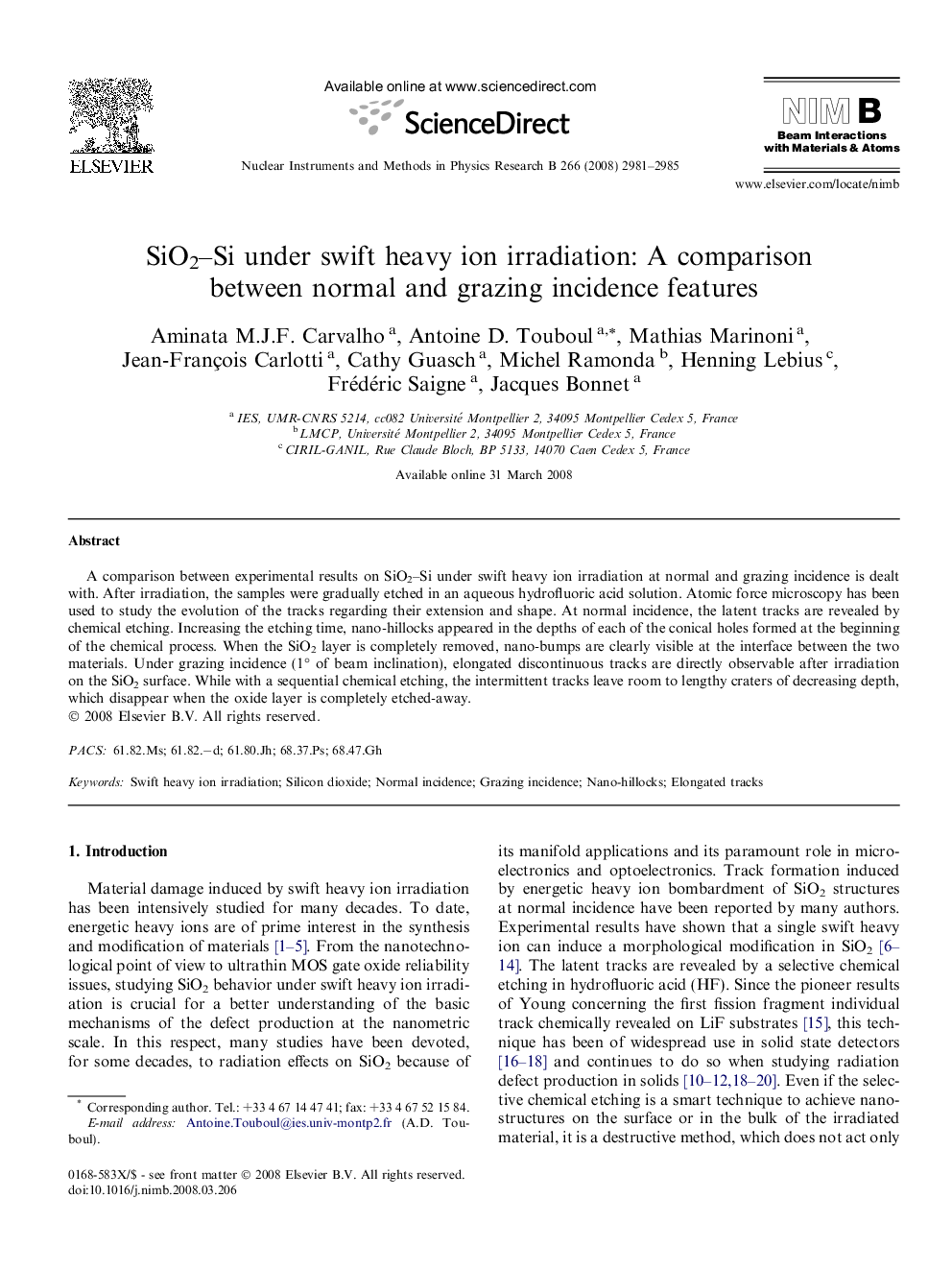| Article ID | Journal | Published Year | Pages | File Type |
|---|---|---|---|---|
| 1686057 | Nuclear Instruments and Methods in Physics Research Section B: Beam Interactions with Materials and Atoms | 2008 | 5 Pages |
Abstract
A comparison between experimental results on SiO2-Si under swift heavy ion irradiation at normal and grazing incidence is dealt with. After irradiation, the samples were gradually etched in an aqueous hydrofluoric acid solution. Atomic force microscopy has been used to study the evolution of the tracks regarding their extension and shape. At normal incidence, the latent tracks are revealed by chemical etching. Increasing the etching time, nano-hillocks appeared in the depths of each of the conical holes formed at the beginning of the chemical process. When the SiO2 layer is completely removed, nano-bumps are clearly visible at the interface between the two materials. Under grazing incidence (1° of beam inclination), elongated discontinuous tracks are directly observable after irradiation on the SiO2 surface. While with a sequential chemical etching, the intermittent tracks leave room to lengthy craters of decreasing depth, which disappear when the oxide layer is completely etched-away.
Keywords
Related Topics
Physical Sciences and Engineering
Materials Science
Surfaces, Coatings and Films
Authors
Aminata M.J.F. Carvalho, Antoine D. Touboul, Mathias Marinoni, Jean-François Carlotti, Cathy Guasch, Michel Ramonda, Henning Lebius, Frédéric Saigne, Jacques Bonnet,
